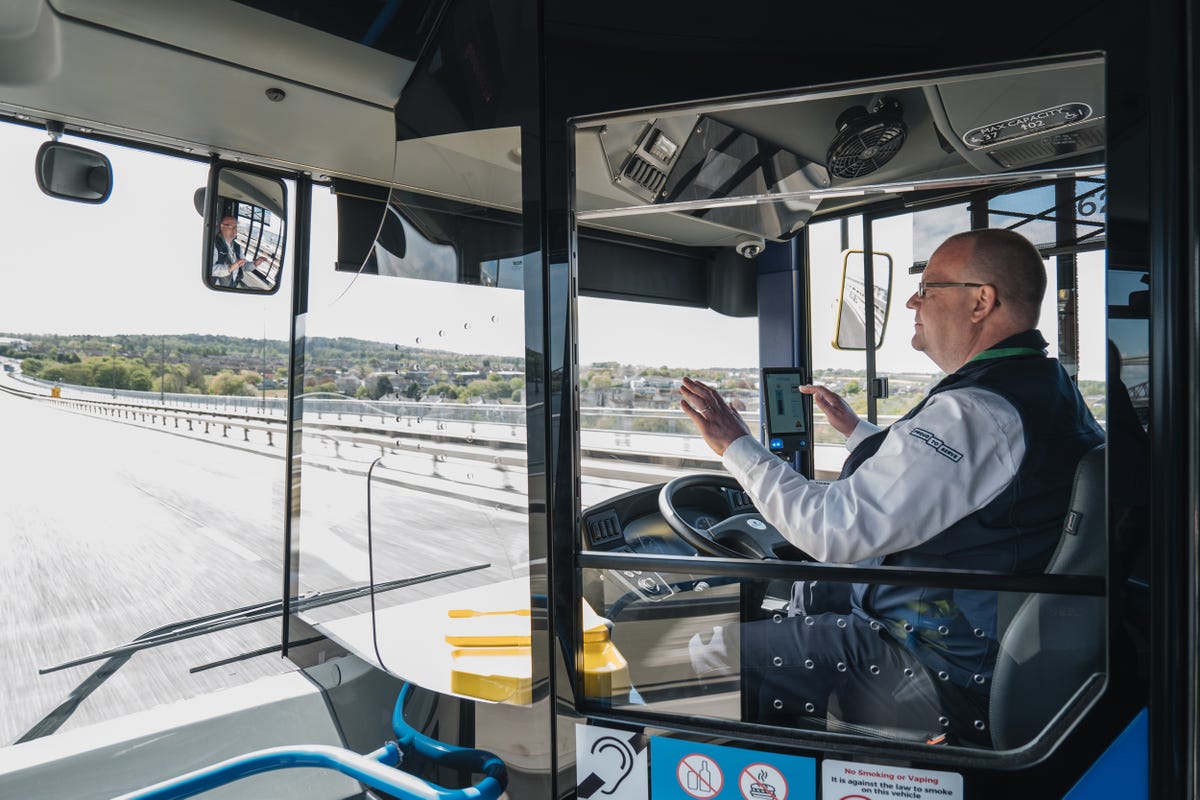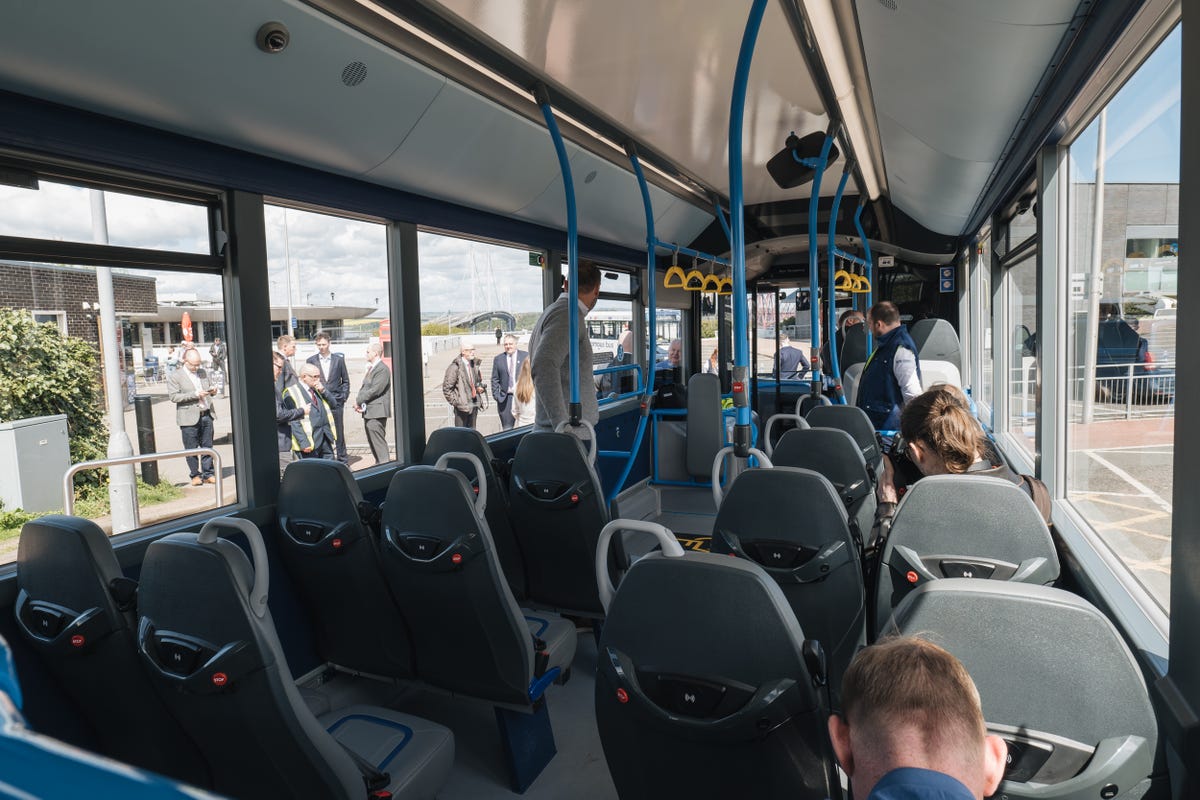This story is part of CNET Zero, a series that chronicles the impact of climate change and explores what’s being done about the problem.
Boring. That’s how I’d describe riding the world’s first autonomous bus service, being launched for public use in Scotland this month. And that’s precisely the point. This bus, driven by computers, not people, is just like any other bus you’d get on to go to work or the shops. Yet its plethora of sensors and computers actually make this seemingly dull journey a huge technological milestone for public transport.
I rode the bus on a media test day, but five of these autonomous buses will go into full, public, timetabled service on May 15, operating on a 14-mile route across the iconic Forth Road Bridge, just outside Scotland’s capital city of Edinburgh. It’ll be the first autonomous bus service on public roads anywhere in the world, and the buses will have to navigate the perils of public roads, including other traffic, traffic signals, cyclists and pedestrians.


The Forth Road Bridge, seen under more photogenic conditions.
Andrew Lanxon/CNETThe organization CAVForth (the CAV part stands for “connected autonomous vehicles”) leads the project, and it says the primary benefit of its autonomous fleet will be safety. With human error causing most traffic accidents globally, autonomous vehicles are expected to be a safer presence on roads — the computers on board don’t get tired, don’t drive while intoxicated and aren’t distracted by roadside ads, screaming kids in the back, ringing phones or trying to eat a particularly big sandwich.
CAVForth also expects a 20% reduction in fuel consumption, through the more efficient driving the computer systems can achieve. This is helped by the buses communicating with traffic signals and getting alerted to upcoming red lights — the vehicles can adjust their driving speed and continue more efficiently. Though the current fleet of five buses is based on existing diesel-driven vehicles, plans include electric-drive models to further decrease emissions.


“Look, ma: no hands!”
Andrew Lanxon/CNETThough the bus is fully autonomous, you’d be forgiven for not really recognizing it as such. You’ll find a regular steering wheel up front, and behind it, a driver who’ll no doubt look as though they’re operating the vehicle as usual. UK law dictates that even fully autonomous vehicles must still have an “operator” present who can take manual control, should the need arise.
CAVForth’s research among local groups also suggests the public still wants the perception of safety that comes from seeing a real person in charge of the vehicle. A second person will also be aboard: a “bus captain,” who’ll take fares, assist with luggage and generally help make the bus journeys easier for the public.
The buses have lidar, radar and camera sensors to “see” traffic, cyclists or other obstacles in all directions, and they use the data to make driving decisions. And on top of the traffic signal connectivity, the route has been updated with refreshed road markings to help the bus sensors see more clearly, along with additional closed-circuit TV to monitor the buses.


When you’re on board, you have no idea the bus is driving itself.
Andrew Lanxon/CNETRiding the bus felt refreshingly normal, as though I were simply being taken to a press event, rather than the bus journey being the event itself. I almost forgot the bus was autonomous, and with the safety driver behind the wheel, I can’t imagine many people feeling at all uncomfortable with the idea of a computer doing the actual driving.
Assuming the first launch is a success, CAVForth plans to expand the route in 2024 and add more vehicles, including the new electric models.